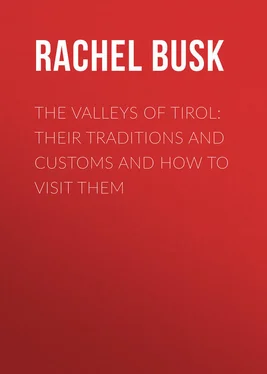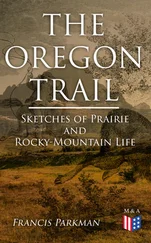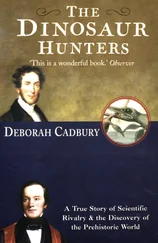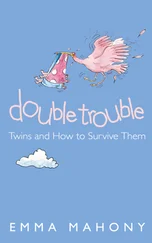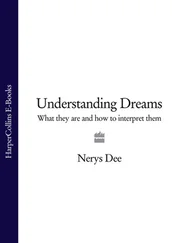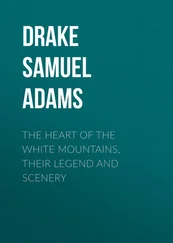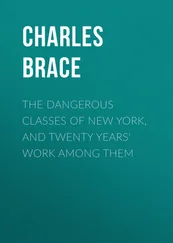Rachel Busk - The Valleys of Tirol - Their traditions and customs and how to visit them
Здесь есть возможность читать онлайн «Rachel Busk - The Valleys of Tirol - Their traditions and customs and how to visit them» — ознакомительный отрывок электронной книги совершенно бесплатно, а после прочтения отрывка купить полную версию. В некоторых случаях можно слушать аудио, скачать через торрент в формате fb2 и присутствует краткое содержание. Жанр: foreign_antique, foreign_prose, Путешествия и география, на английском языке. Описание произведения, (предисловие) а так же отзывы посетителей доступны на портале библиотеки ЛибКат.
- Название:The Valleys of Tirol: Their traditions and customs and how to visit them
- Автор:
- Жанр:
- Год:неизвестен
- ISBN:нет данных
- Рейтинг книги:3 / 5. Голосов: 1
-
Избранное:Добавить в избранное
- Отзывы:
-
Ваша оценка:
- 60
- 1
- 2
- 3
- 4
- 5
The Valleys of Tirol: Their traditions and customs and how to visit them: краткое содержание, описание и аннотация
Предлагаем к чтению аннотацию, описание, краткое содержание или предисловие (зависит от того, что написал сам автор книги «The Valleys of Tirol: Their traditions and customs and how to visit them»). Если вы не нашли необходимую информацию о книге — напишите в комментариях, мы постараемся отыскать её.
The Valleys of Tirol: Their traditions and customs and how to visit them — читать онлайн ознакомительный отрывок
Ниже представлен текст книги, разбитый по страницам. Система сохранения места последней прочитанной страницы, позволяет с удобством читать онлайн бесплатно книгу «The Valleys of Tirol: Their traditions and customs and how to visit them», без необходимости каждый раз заново искать на чём Вы остановились. Поставьте закладку, и сможете в любой момент перейти на страницу, на которой закончили чтение.
Интервал:
Закладка:
Before starting for the Zillerthal I may mention two castles which may also be seen from Jenbach, though like it they belong in strictness to the chapter on the Left Inn-bank. One is Thurnegg by name, which was restored as a hunting-seat by Archduke Ferdinand; and at the instance of his second wife, the pious Anna Katharina of Mantua, he added a chapel, in order that his hunting-parties might always have the opportunity of hearing Mass before setting out for their sport.
Another is Tratzberg, which derived its name from its defiant character. It is situated within an easy walk of Jenbach. Permission to visit it is readily given, for it counts as a show-place. It may be taken on the way to S. Georgenberg and Viecht, but it occupies too much time, and quite merits the separate excursion by its collections and its views. Frederick sold it in 1470 to Christian Tänzel, a rich mining proprietor of the neighbourhood, who purchased with it the right to bear the title of Knight of Tratzberg. No expense was spared in its decoration, and its paintings and marbles made it the wonder of the country round. In 1573 it passed into the hands of the Fuggers, and at the present day belongs to Count Enzenberg, who makes it an occasional residence. A story is told of it which is in striking contrast to that mentioned of Thurnegg. One of the knights of the castle in ancient time had a reputation for caring more for the pleasures of the chase than for the observances of religion. Though he could get up at an early hour enough at the call of his Jäger’s horn, the chapel bell vainly wooed him to Mass.
In vain morning by morning his guardian angel directed the sacred sound upon his ear; the knight only rolled himself up more warmly in the coverlet, and said, ‘No need to stir yet, the dogs are not brought round till five o’clock.’
‘Ding – dong – dang! Come – to – Mass! Ding – dong – dang!’ sang the bells.
‘No, I can’t,’ yawned the knight, and covered his ear with the bed-clothes.
The bell was silent, and the knight knew that the pious people who had to work hard all day for their living, and yet spared half an hour to ask God’s blessing on their labours, were gone into the chapel.
He fancied he saw the venerable old chaplain bowing before the altar, and smiting his breast; he saw the faithful rise from their knees while the glad tidings of the Gospel were announced, and they proclaimed their faith in them in the Creed; he heard them fall on their knees again while the sacred elements were offered on the altar and the solemn words of the consecration pronounced; he saw little Johann, the farrier’s son, bow his head reverently on the steps, and then sound the threefold bell which told of the most solemn moment of the sacred mysteries; and the chapel bell took up the note, and announced the joyful news to those whom illness or necessity forced to remain away.
Then hark! what was that? The rocks under the foundation of the castle rattled together, and all the stones of its massive walls chattered like the teeth of an old woman stricken with fear. The three hundred and sixty-five windows of the edifice rattled in their casements, but above them all sounded the piercing sound of the knight’s cry of anguish. The affrighted people rushed into the knight’s chamber; and what was their horror when, still sunk in the soft couch where he was wont to take his ease, there he lay dead, while his throat displayed the print of three black and burning claws. The lesson they drew was that the knight, having received from his guardian angel the impulse to repair his sloth by at least then rising to pay the homage which the bell enjoined, had rejected even this last good counsel, thereby filling up the measure of his faults. For years after marks were shown upon the wall as having been sprinkled by his blood!
The first little town that reckons in the Zillerthal is Strass, a very unpretending place, and then Schlitters.
At Schlitters they have a story of a butcher who, going to Strass to buy an ox, had scarcely crossed the Zill and got a little way from home, than he saw lying by the way-side a heap of the finest wheat. Not liking to appropriate property which might have a legitimate owner, he contented himself with putting a few grains in his pocket, and a few into his sack, as a specimen. As he went by the way his pockets and his sack began to get heavier and heavier, till it seemed as if the weight would burst them through. Astonished at the circumstance he put in his hand, and found them all full of shining gold. As soon as he had recovered his composure, he set off at the top of his speed, and, heeding neither hill or dale, regained the spot where he had first seen the wheat. But it was no more to be seen. If he had had faith to commend himself to God on his first surprise, say the peasants, and made the holy sign of redemption, the whole treasure would have been his.
There is another tradition at Schlitters of a more peculiar character. It is confidently affirmed that the village once boasted two churches, though but a very small one would supply the needs of the inhabitants. Hormayr has sifted the matter to the bottom, and explains it in this way. There lived in the neighbourhood two knights, one belonging to the Rottenburger, and the other to the Freundsberger family. Now the latter had a position of greater importance, but the former possessed a full share of family haughtiness, and would not yield precedence to any one. In order not to be placed on a footing of inferiority, or even of equality, with his rival, he built a second church, which he might attend without being brought into contact with him. No expense was spared, and the church was solidly built enough; but no blessing seemed to come on the edifice so built, no pains could ever keep it in repair, and at last, after crumbling into ruin, every stone of it disappeared.
Kropfsberg is a fine ruin, belonging to Count Enzenberg, seen a little above Strass, on a commanding height between the high road and the Inn. It is endeared to the memory of the Tiroleans by having been the spot where, on St. Michael’s Day, 1416, their favourite Friedrich mit der leeren Tasche was reconciled with his brother Ernst der Eiserne , who, after the Council of Constance had pronounced its ban on Frederick, had thought to possess himself of his dominions.
The largest town of the Zillerthal is Fügen, a short distance below Schlitters, and the people are so proud of it, that they have a saying ever in their mouths, ‘There is but one Vienna and one Fügen in the world!’ It doubtless owes its comparative liveliness and prosperity to its château being kept up and often inhabited by its owners (the Countess of Dönhof and her family). This is also a great ornament to the place, having been originally built in the fifteenth century by the lords of Fieger, though unhappily the period of its rebuilding (1733) was not one very propitious to its style. The sculpture in the church by the native artist, Nissl, is much more meritorious. The church of Ried, a little further along the valley, is adorned with several very creditable pictures by native artists. It is the native place of one of the bravest of the defenders of throne and country, so celebrated in local annals of the early part of the century, Sebastian Riedl. He was only thirty-nine at his death in 1821. Once, on an occasion of his fulfilling a mission to General Blucher, he received from him a present of a hussar’s jacket, which he wore at the battle of Katzbach, and it is still shown with pride by his compatriots.
The Zillerthal was the only part of Tirol where Lutheranism ever obtained any hold over the people. The population was very thin and scattered, consequently they were out of the way of the regular means of instruction in their own faith; and it often happened, when their dwellings and lands were devastated by inundations, that they were driven to seek a livelihood by carrying gloves, bags, and other articles made of chamois leather, also of the horns of goats and cattle, into the neighbouring states of Germany. Hence they often came back imbued with the new doctrines, and bringing books with them, which may have spread them further. This went on, though without attracting much attention, till the year 1830, when they demanded permission to erect a church of their own. The Stände of Tirol were unanimous, however, to resist any infringement of the unity of belief which had so long been preserved in the country. The Emperor confirmed their decision, and gave the schismatics the option of being reconciled with the Church, or of following their opinions in other localities of the empire where Lutheran communities already existed. A considerable number chose the latter alternative, and peace was restored to the Zillerthal. Every facility was given them by the government for making the move advantageously, and the inhabitants, who had been long provoked by the scorn and ridicule with which the exiles had treated their time-honoured observances, held a rejoicing at the deliverance.
Читать дальшеИнтервал:
Закладка:
Похожие книги на «The Valleys of Tirol: Their traditions and customs and how to visit them»
Представляем Вашему вниманию похожие книги на «The Valleys of Tirol: Their traditions and customs and how to visit them» списком для выбора. Мы отобрали схожую по названию и смыслу литературу в надежде предоставить читателям больше вариантов отыскать новые, интересные, ещё непрочитанные произведения.
Обсуждение, отзывы о книге «The Valleys of Tirol: Their traditions and customs and how to visit them» и просто собственные мнения читателей. Оставьте ваши комментарии, напишите, что Вы думаете о произведении, его смысле или главных героях. Укажите что конкретно понравилось, а что нет, и почему Вы так считаете.
